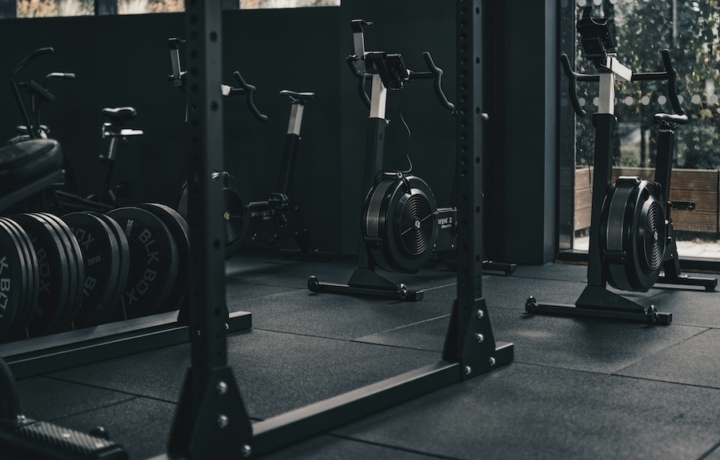Exercise
Seated Dumbbell Calf Raise

Seated Dumbbell Calf Raise
How to Perform
- Sit on a bench with your feet flat on the floor, holding a dumbbell on top of your thighs just above your knees.
- Place the balls of your feet on an elevated surface like a block or weight plate, allowing your heels to drop below the level of your toes.
- Position the dumbbell securely on your thighs, using both hands to stabilize the weight directly above your knees.
- Sit tall with your spine neutral and shoulders relaxed, maintaining this posture throughout the exercise.
- Inhale, then exhale as you press through the balls of your feet to raise your heels as high as possible, contracting your calf muscles fully.
- Hold the peak contraction for a brief moment, focusing on the tension in your calf muscles.
- Inhale as you slowly lower your heels back down below the level of your toes, feeling a stretch in your calf muscles.
- Control the descent completely, avoiding any bouncing or momentum at the bottom position before beginning the next repetition.
Important information
- Make sure your knees remain directly above your ankles throughout the movement, avoiding any inward or outward knee drift.
- Keep your toes pointed straight ahead to ensure proper muscle engagement and to prevent strain on your ankle joints.
- Focus on a full range of motion by allowing your heels to drop below the platform before raising them as high as possible.
- If you experience cramping, reduce the weight and ensure you're properly hydrated before attempting the exercise again.

Seated Dumbbell Calf Raise
Exercise Details
Primary Muscles
Muscle Groups
Mechanic
Built for progress
Take the guesswork out of training
Create personalized AI-powered workout plans that evolve with you. Train smarter, track every rep and keep moving forward, one workout at a time.






The Seated Dumbbell Calf Raise represents an intermediate-level isolation exercise that specifically targets the gastrocnemius and soleus muscles of your calves. This accessible yet effective movement has earned its place in many bodybuilding routines and rehabilitation programs for its ability to develop both aesthetic lower leg definition and functional strength. Unlike standing variations, this seated version places the emphasis squarely on the calf muscles by eliminating the involvement of other leg muscles and reducing the total load. This targeted approach makes it particularly valuable for those looking to address muscular imbalances or recover from lower leg injuries while still providing enough resistance for meaningful strength development.
For bodybuilders, the seated dumbbell calf raise offers precise control over the contraction and stretch phases, allowing for the mind-muscle connection essential for hypertrophy. The exercise's adjustable resistance via dumbbell selection makes it scalable as your strength increases, ensuring continuous progression on your fitness journey. Many physique athletes incorporate this movement during both mass-building phases and pre-competition definition work to achieve that coveted diamond-shaped calf development. Beyond aesthetic benefits, strengthening your calves through this exercise carries significant functional advantages. Strong, resilient calf muscles provide the foundation for explosive movements in various sports, improve ankle stability, and can help prevent common injuries like Achilles tendinitis. The seated position also makes this an excellent option for those who experience lower back discomfort with standing calf exercises.
Whether you're looking to build impressive lower leg development, recover from an injury, or simply strengthen this often-neglected muscle group, the seated dumbbell calf raise delivers targeted results with minimal equipment requirements. Its effectiveness lies in its simplicity: proving that sometimes the most straightforward exercises yield the most impressive results for both appearance and performance.
FAQ - Seated Dumbbell Calf Raise
The seated dumbbell calf raise primarily targets the gastrocnemius and soleus muscles of your calves. Because you're in a seated position with knees bent, there's slightly more emphasis on the soleus muscle compared to standing variations.
Start with a weight that allows you to complete 12-15 controlled repetitions with a full range of motion. Most beginners can begin with 25-40 pounds on their knees, while intermediate lifters might use 45-70 pounds depending on their strength level.
The most common mistakes include bouncing at the bottom of the movement, using momentum instead of muscle control, and not achieving a full range of motion. Always lower your heels below the level of your toes for a complete stretch, and pause briefly at the top of each repetition.
For optimal calf development, train them 2-3 times per week with at least 48 hours between sessions for recovery. Calves generally respond well to higher volume, so consider performing 3-4 sets of 12-20 repetitions per workout.
The seated variation is generally safer than standing calf raises for those with mild Achilles tendonitis, as it reduces the overall load. However, consult with a physical therapist before starting if you have existing Achilles problems, and always stop if you feel any sharp pain during the exercise.






